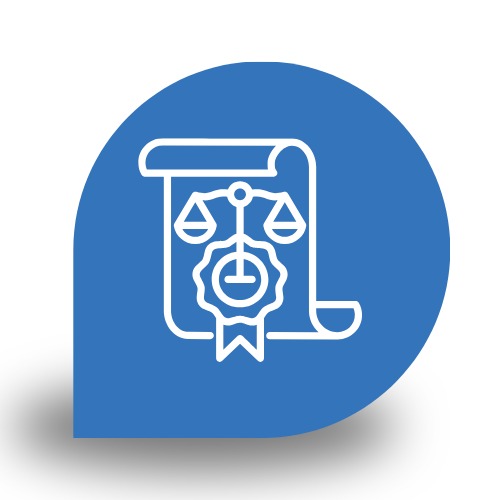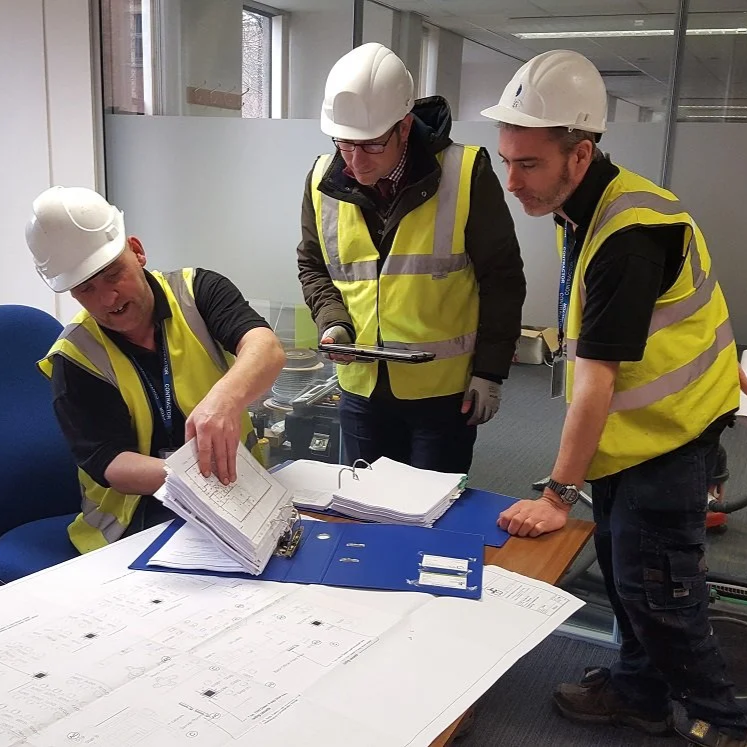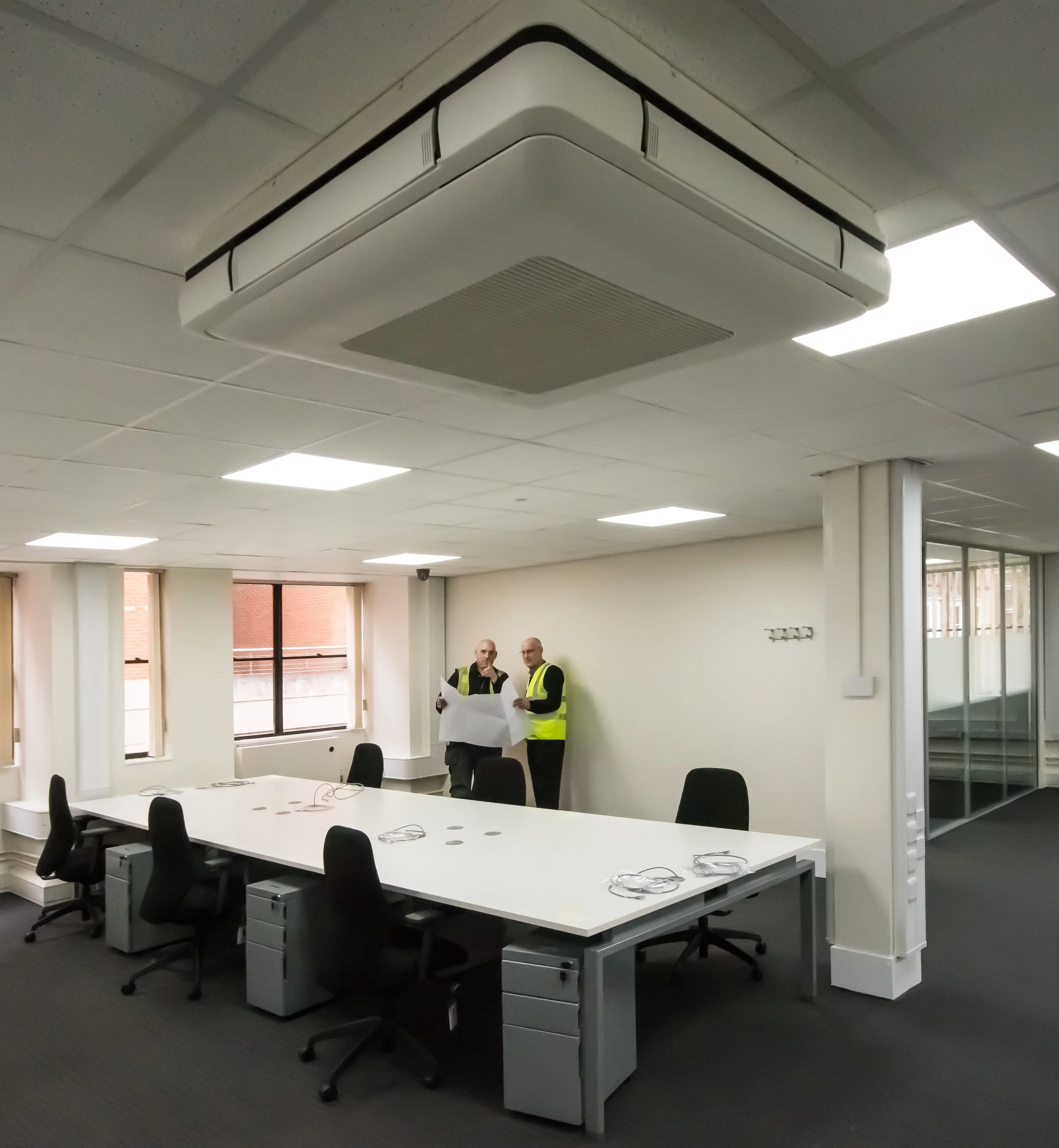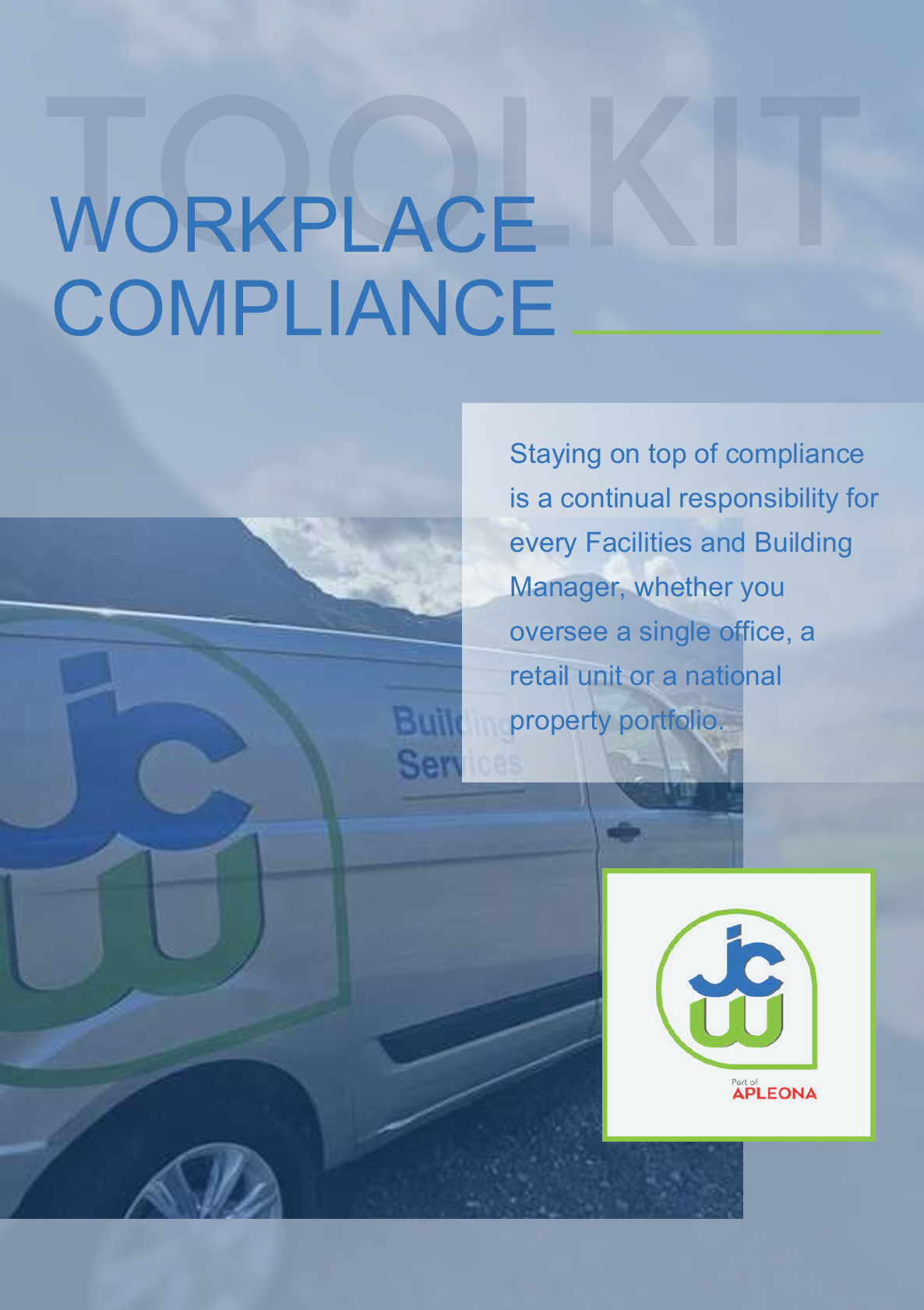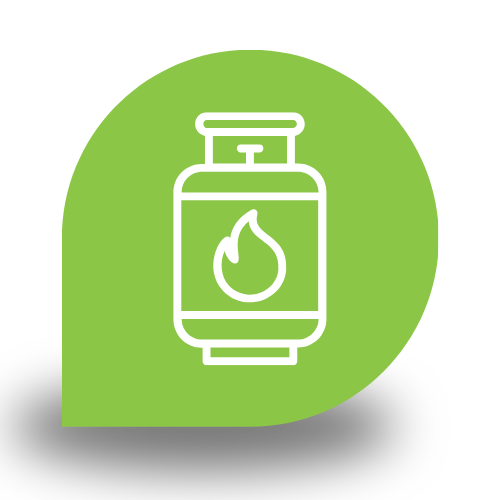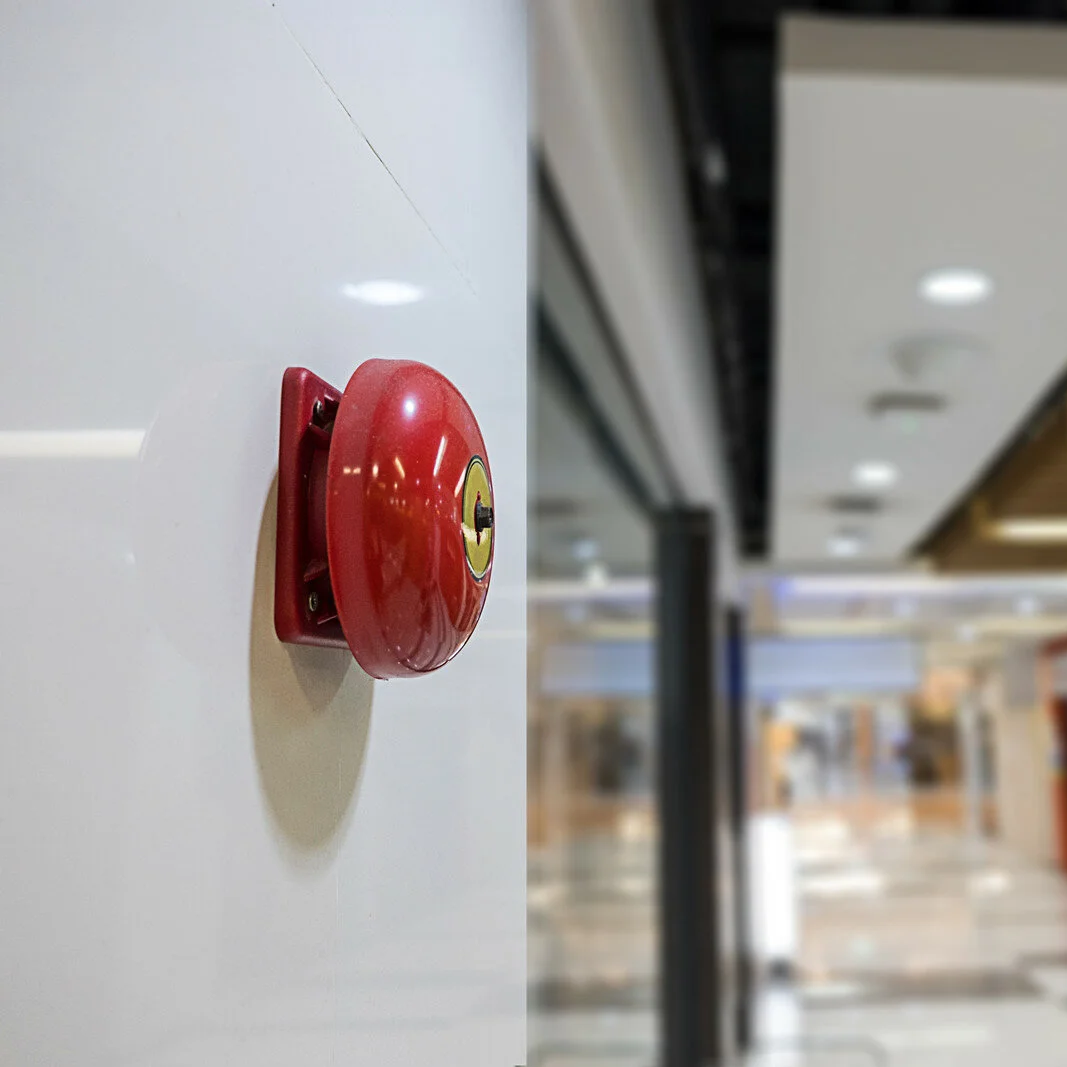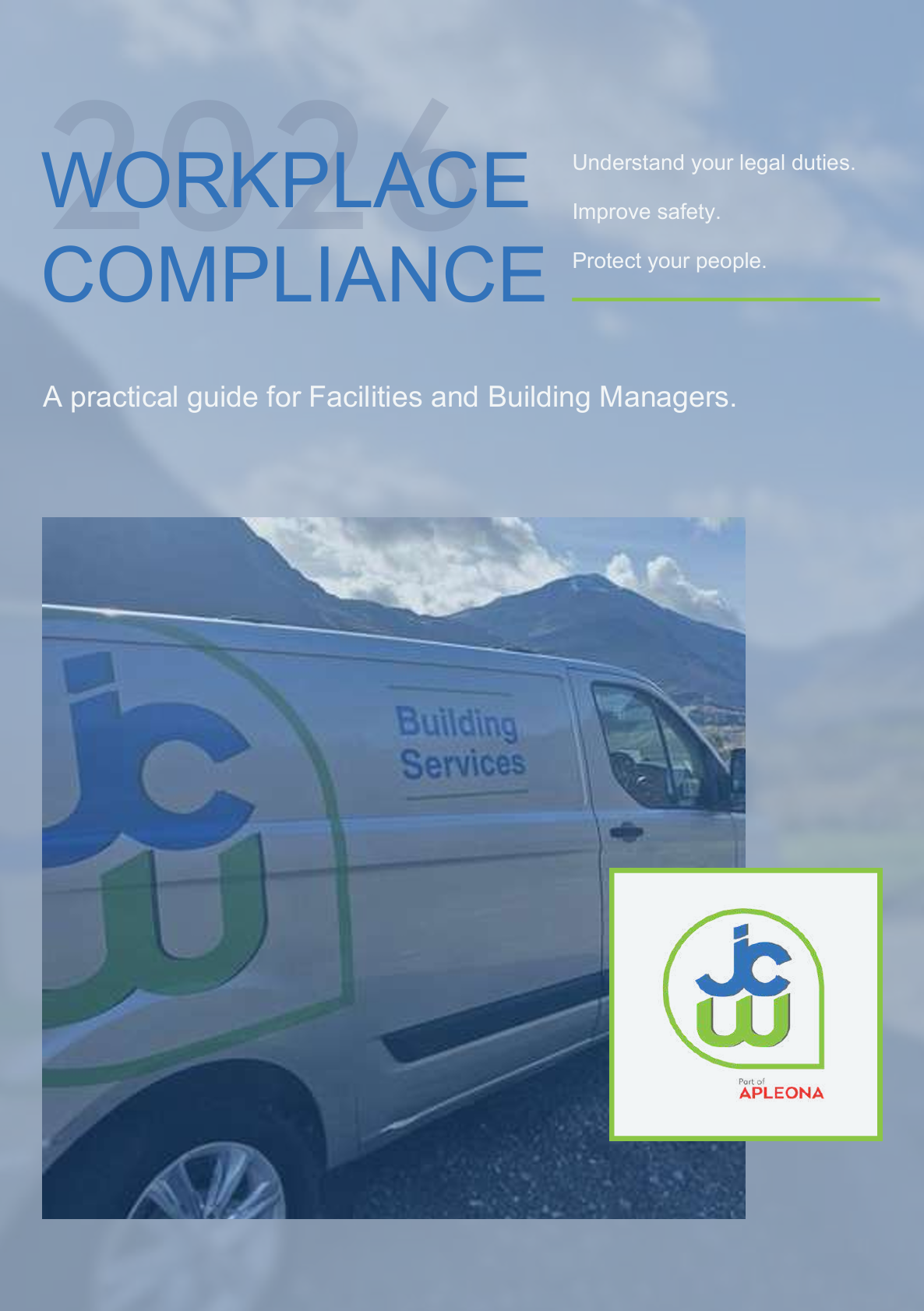Workplace Compliance | A Practical Guide for Facilities and Building Managers
Understand your legal duties. Improve safety. Protect your people.
Content of this Guide
Purpose | Foreword | Understanding | Air | Gas | Fire | Electrical | Water | Legionella | Lifting | Summary | FAQs | JCW Compliance Toolkit | Download PDF
This guide has been developed to support Facilities and Building Managers in navigating the various laws and regulations that govern workplace environments. While many professionals will already be familiar with aspects of their legal obligations, often gained through formal training or professional memberships, our aim is to provide a clear, consolidated overview of this complex and ever-evolving area.
Our focus lies in those aspects of compliance where regular maintenance plays a pivotal role in upholding health and safety standards. These standards are essential in creating working environments that are both safe and comfortable for occupants.
Rather than addressing building fabric, new construction or major refurbishment works, this guide concentrates on the operational services and systems required to keep existing buildings running safely and in accordance with current legislation.
What’s Covered
The key areas addressed in this guide include:
Air quality and ventilation
Gas safety
Fire Safety
Electrical safety
Water systems and hygiene
We also briefly touch upon:
Lifting equipment safety
The control and prevention of Legionnaires’ disease
Other keys services and best practices
For each area, you will find:
A summary of the relevant legislation and standards
The principal compliance concerns to be aware of
References to useful resources
Noteworthy facts and statistics
A practical downloadable compliance checklist
This guide has been designed with office and retail environments in mind. While the content may also apply to the healthcare sector, please note that additional sector-specific regulations will need to be considered in those settings. The guide does not cover factory or construction site compliance in any detail.
Disclaimer
Whilst every effort has been made to ensure this guide is accurate and helpful, it should not be regarded as a substitute for official legal documents or professional advice. Its purpose is to highlight potential areas of risk or gaps in current knowledge. Readers remain responsible for ensuring compliance with all applicable legislation and guidance. We strongly encourage you to consult the referenced legislation and authoritative guidance directly, and to seek professional advice where appropriate. JCW accepts no liability for reliance placed on this information.
In any modern organisation, compliance is not merely a matter of ticking boxes, it is a fundamental obligation to ensure the safety, wellbeing and dignity of every person who walks through the door. As Facilities and Building Managers, you sit at the very heart of this responsibility.
At JCW, we understand the pressures you face. Balancing maintenance, operational demands and regulatory duties can be complex, particularly when legislation continues to evolve. While most professionals in your role are well-acquainted with the principles of health and safety, the practical application of multiple regulatory requirements can quickly become overwhelming.
This guide has been created to help simplify that challenge.
It brings together, in one place, the essential areas of workplace compliance that pertain to the day-to-day operation of buildings, particularly in office and retail environments. From air quality and water hygiene to gas safety and lifting operations, the information presented here is designed to assist you in fulfilling your legal duties with clarity and confidence.
While this document is not intended to replace formal training or legal advice, it offers a practical and structured overview of the main compliance topics affecting your role. Alongside each topic, you will find actionable insights, compliance checklists and reference links to support further investigation.
At JCW, we are committed to helping you create and maintain workplaces that are not only compliant but safe, sustainable and fit for purpose.
We hope you find this guide both informative and useful in your daily work.
Kurt Hedgley
Managing Director
Workplace compliance refers to the legal duties and responsibilities placed upon employers, building owners and facilities managers to ensure that working environments are safe, health and fit for use. In the United Kingdom, this obligation is underpinned by a wide range of legislation, codes of practice and statutory guidance.
For those responsible for managing buildings, understanding the structure of this legal framework is essential, not only for legal protection, but also for the welfare of staff, visitors and contractors.
The Legal Hierarchy Explained
The UK's system of health and safety law is built on several tiers of legislation and guidance. Each plays a distinct role:
Acts of Parliament (Primary Legislation)
These are laws passed by Parliament, for example, the Health and Safety at Work Act 1974 (HSWA). Acts define general duties and establish the legal foundations of compliance.
Regulations (Secondary Legislation)
Created under the authority of an Act, regulations provide detailed instructions on how the law must be applied in practice. For instance, the Workplace (Health, Safety and Welfare) Regulations 1992 support the HSWA by outlining specific workplace standards.
Statutory Instruments (SIs)
A type of regulation, SIs are legally enforceable and allow the government to update or implement detailed rules without passing a new Act. They are often used to reflect changes in technology, best practice or emerging risks.
Approved Codes of Practice (ACOPs)
ACOPs are published by the Health and Safety Executive (HSE). Although not legally binding in themselves, they carry special legal status. Following an ACOP is usually considered evidence of good practice and compliance with the law. Failing to follow one may require you to demonstrate that your alternative method is equally effective.
The Health and Safety at Work Act 1974
This landmark piece of legislation remains the cornerstone of UK workplace safety law. It places a duty on employers to ensure, so far as is reasonably practicable, the health, safety and welfare of their employees and others affected by their operations.
Under the HSWA, those responsible for premises, whether owners, occupiers or managing agents, must identify potential hazards, assess risks and take appropriate measures to control them.
The Act is supported by numerous regulations and ACOPs, many of which are specific to building systems and facilities management responsibilities.
The Role of the HSE and Local Authorities
The Health and Safety Executive (HSE) is the primary regulator for health and safety across most sectors. It inspects workplaces, issues guidance and enforces the law where necessary.
In lower-risk environments, such as offices, shops, and cafés, local authorities may take the lead in enforcement. Regardless of the enforcing body, compliance remains the responsibility of the duty holder.
Why Staying Up-to-Date Matters
Legislation and standards are not static. They evolve in response to technological change, emerging risks, case law and public safety priorities. As a Facilities or Building Manager, you have a professional responsibility to remain informed about updates and ensure that any changes are reflected in your policies, maintenance regimes and operating procedures.
Why It Matters
Clean, well-ventilated air is fundamental to the health, comfort and performance of building occupants. Poor indoor air quality has been directly linked to increased illness, fatigue and reduced productivity in the workplace. For Facilities and Building Managers, managing air quality is not only a matter of employee welfare - it is a core compliance obligation under UK law.
What the Law Says
Several key pieces of legislation govern air quality and ventilation in the workplace:
Health and Safety at Work etc. Act 1974 (HSWA)
Employers have a general duty to ensure the health, safety and welfare of those affected by their operations, including through proper ventilation.
Workplace (Health, Safety and Welfare) Regulations 1992
These regulations state that workplaces must be adequately ventilated with fresh, clean air. This applies to all enclosed workplaces and became fully enforceable for both new and existing buildings from 1 January 1996.
The regulations also stipulate that air quality should be maintained to a standard that does not compromise comfort or wellbeing, particularly where heating or air conditioning systems are in use.
Key Compliance Concerns
Poor air quality or inadequate ventilation may result in:
The spread of airborne bacteria or viruses.
Exacerbation of respiratory conditions such as asthma.
Accumulation of fumes or pollutants from gas appliances.
Moisture retention leading to damp, mould, or building fabric deterioration.
Temperature extremes that fall outside legal minimums.
The legal minimum temperature for workplaces is 16°C, or 13°C where strenuous physical work is performed. However, conditions must always be reasonable and comfortable.
Best Practice Actions
Facilities and Building Managers should:
Ensure HVAC systems are regularly inspected and maintained.
Replace or clean air filters as per manufacturer guidelines.
Monitor humidity and airflow to prevent stagnation or excess moisture.
Respond promptly to reports of discomfort or odours from occupants.
Keep clear documentation of inspections, servicing and repairs.
Did You Know?
"Sick Building Syndrome" is a recognised phenomenon where occupants experience illness or discomfort linked directly to time spent in a particular building. Poor air quality is a leading contributor.
The 1992 Workplace Regulations apply to offices, shops, hospitals and schools but not to construction sites, which are covered by separate legislation.
JCW Compliance Toolkit
Refer to the Air Quality & Ventilation Checklist in the JCW Compliance Toolkit for practical steps and inspection guidance.
Air Quality and Ventilation - FAQs
-
While not a strict legal requirement, CO₂ monitoring is recommended by the HSE as a practical way to check ventilation adequacy.
-
Usually every 3–6 months, depending on system type and usage. Always follow manufacturer guidance.
-
16°C for most work, or 13°C where strenuous physical tasks are carried out.
-
Yes, if it provides a sufficient supply of clean, fresh air for the occupants.
Why It Matters
Gas systems, if poorly installed, maintained or monitored, can pose significant risks to life and property. From carbon monoxide poisoning to potential explosions, gas safety is one of the most critical responsibilities faced by Facilities and Building Managers.
Proper compliance not only ensures occupant safety but also protects against legal penalties and reputational damage. Many gas-related incidents in commercial properties are preventable through regular inspection and maintenance.
What the Law Says
The principal legislation relating to gas safety is:
Gas Safety (Installation and Use) Regulations 1998
These regulations govern the safe installation, maintenance, and use of gas appliances, pipework, and flues in all premises. They require employers and landlords (including those managing commercial property) to ensure that all gas work is carried out by a competent person.
Only engineers who are registered with the Gas Safe Register are legally permitted to install, maintain, or repair gas appliances in the UK.
Key Compliance Concerns
Failure to comply with gas safety regulations may lead to:
Carbon monoxide leaks, which are often undetectable without alarms.
Gas accumulation and explosion risk.
Unsafe or ageing equipment left in operation.
Inadequate flue ventilation.
Undocumented or unverified maintenance history.
If your building has commercial catering equipment, an annual CP42 certificate is required. For other gas appliances, an up-to-date CP12 certificate (Commercial Gas Safety Record) is typically required to demonstrate ongoing compliance.
Best Practice Actions
Facilities and Building Managers should:
Ensure all gas appliances and pipework are inspected annually.
Use only Gas Safe registered engineers for any installation or servicing.
Keep a full record of servicing, inspections, and safety certificates.
Fit and test carbon monoxide detectors where required but remember these are not substitutes for safe systems.
Regularly inspect gas service pipework, not just appliances.
Did You Know?
Propane gas is heavier than air, meaning it can pool at floor level and increase ignition risk.
One in six UK homes inspected by the Gas Safe Register was found to have unsafe gas appliances.
Carbon monoxide poisoning causes approximately 60 deaths each year in England and Wales alone (source: NHS).
JCW Compliance Toolkit
Refer to the Gas Safety Checklist in the JCW Compliance Toolkit for practical steps and inspection guidance.
Gas Safety - FAQs
-
Yes — if your building has any gas appliances, a Commercial Gas Safety Certificate (CP12) must be issued annually by a Gas Safe registered engineer. For commercial catering equipment, a CP42 certificate is required.
-
By law, only engineers on the Gas Safe Register are permitted to install, maintain, or repair gas appliances in the UK.
-
They are not a substitute for proper maintenance, but in certain settings they are strongly recommended, especially where gas appliances are present. Always test and maintain them regularly.
-
Gas appliances and pipework should be inspected annually but leaks or defects should be reported and repaired immediately.
-
Penalties include fines, invalidated insurance, enforcement notices and in severe cases, prosecution or imprisonment. More importantly, poor gas safety can put lives at risk.
Why It Matters
Fire is one of the most serious hazards facing any workplace. Beyond the obvious threat to life, fire can destroy property, disrupt business operations and result in serious legal consequences.
Effective fire safety is not solely about having extinguishers or alarms in place, it’s about adopting a culture of prevention, underpinned by thorough risk assessment, regular maintenance and clear responsibilities. Facilities and Building Managers are at the forefront of this vital duty.
What the Law Says
The main legislation governing fire safety in non-domestic premises is:
Regulatory Reform (Fire Safety) Order 2005
This order places a legal duty on the “responsible person” to identify, manage and reduce the risk of fire in the workplace. This includes carrying out regular fire risk assessments, implementing suitable safety measures and ensuring systems are maintained and staff are trained.
The responsible person is usually the employer, building owner, or someone with control over the premises - often the Facilities or Building Manager.
Key Compliance Concerns
Non-compliance can result in:
Inadequate fire detection or alarm systems.
Obstructed escape routes.
Poor maintenance of fire-fighting equipment.
Lack of clear evacuation procedures.
Staff unaware of their roles in the event of a fire.
Fire risk assessments must be kept up to date, particularly when any significant changes occur (e.g. new equipment, room layout, staff numbers or usage of the premises).
Best Practice Actions
To stay compliant and prepared:
Carry out a written fire risk assessment and review it regularly.
Keep escape routes clearly marked and free from obstruction.
Ensure fire alarms, extinguishers and emergency lighting are tested regularly by competent persons.
Provide appropriate fire safety training to all staff.
Appoint and train designated fire wardens or marshals.
Maintain a clear and documented fire safety policy.
Display evacuation routes and instructions in visible locations.
Did You Know?
Home Office statistics show that in the year to December 2024, there were 254 fire-related fatalities in England and 2,779 people required hospital treatment following fires.
Most fire-related deaths are caused by smoke inhalation, not burns.
The majority of fire incidents are linked to human error or neglect - emphasising the importance of awareness and proactive prevention.
JCW Compliance Toolkit
Use the Fire Safety Checklist in the JCW Compliance Toolkit to audit your current fire protection measures and ensure your risk assessments are complete and up to date.
Fire Safety - FAQs
-
At least annually, and whenever significant changes occur in the workplace (layout, staff numbers, new equipment, etc.).
-
Yes. All workplaces must carry out regular fire drills, typically once or twice per year.
-
Usually the employer, building owner, or Facilities Manager in control of the premises.
-
Yes. Fire extinguishers must be serviced annually by a competent contractor.
Why It Matters
Electricity is essential to modern workplaces but it also poses significant dangers if systems are poorly installed, damaged, or inadequately maintained. Electrical incidents can result in fire, serious injury, or fatality. Even minor faults can have severe consequences if not identified and addressed promptly.
Facilities and Building Managers are legally and morally responsible for ensuring all electrical installations, systems and appliances within a workplace are safe to use.
What the Law Says
The key piece of legislation in this area is:
Electricity at Work Regulations 1989
These regulations apply to all work activities involving electricity. They place a duty on employers to ensure electrical systems are constructed and maintained so as to prevent danger. This includes fixed installations (such as mains wiring), portable appliances and any electrical equipment used in the workplace.
Only qualified persons should carry out electrical installation, repair or inspection work. In certain cases, a “competent person” may carry out minor tasks such as replacing plugs or fuses, but formal testing and inspection should always be undertaken by a suitably qualified electrician.
Key Compliance Concerns
Common issues include:
Faulty wiring, outdated distribution boards, or poor insulation.
Damaged or trailing extension leads.
Electrical appliances not subject to Portable Appliance Testing (PAT).
Wet or damp conditions increasing the risk of electrocution.
Lack of documented safety checks or inspection schedules.
Workplaces must also ensure that employees understand the basic safety protocols around electricity and know how to report faults or hazards.
Best Practice Actions
Facilities and Building Managers should:
Ensure all fixed installations are periodically inspected and tested (typically every 5 years for commercial properties).
Implement a schedule for Portable Appliance Testing (PAT), particularly for high-use or high-risk items.
Ensure that damaged cables or equipment are immediately removed from use.
Keep electrical panels and circuit boards clear and accessible.
Provide training and guidance to staff on safe use of equipment.
Document all inspections, repairs and test results.
Did You Know?
In the UK, electrical faults cause over 12,000 fires every year (source: Electrical Safety First).
According to HSE data, around 1,000 workplace electrical incidents are reported annually, with approximately 30 fatalities. Electrical incidents account for around 4% of all workplace deaths.
Water and electricity remain one of the most dangerous combinations, staff must be warned against using electrical appliances in damp or wet areas.
JCW Compliance Toolkit
Use the Electrical Safety Checklist in the JCW Compliance Toolkit to ensure your workplace is protected against electrical faults, equipment failure, and fire risks.
Electrical Safety - FAQs
-
Frequency depends on risk and equipment type, typically between 6 and 24 months.
-
Yes. Commercial premises should have a full Electrical Installation Condition Report every 5 years (or sooner in higher-risk settings).
-
Minor repairs may be possible, but only by someone competent. Significant faults must be handled by a qualified electrician.
-
Faulty wiring, damaged cables, misuse of extension leads and wet environments.
Why It Matters
Water is essential for sanitation, hygiene, and daily operations in every workplace but if not properly managed, it can become a significant health hazard. From poor handwashing facilities to the growth of bacteria in stagnant water systems, Facilities and Building Managers must ensure all water systems meet legal standards and are safe for use.
This area of compliance includes not only toilet and washing facilities, but also the quality, temperature and supply of water used throughout the premises.
What the Law Says
Two key regulations apply:
Workplace (Health, Safety and Welfare) Regulations 1992
These regulations require that employers provide clean and sufficient toilet and washing facilities, with an adequate supply of hot and cold water. Facilities must be well-ventilated, well-lit, and hygienic.
Water Supply (Water Quality) Regulations 2016
These regulations ensure the safety and wholesomeness of water supplied to premises. They are particularly relevant where water is used in food preparation or for drinking.
In some workplaces, there may also be additional local water authority standards or sector-specific guidance to consider.
Key Compliance Concerns
Failure to maintain water systems and sanitation facilities may lead to:
Spread of waterborne illnesses, including norovirus and E. coli.
Poor hygiene contributing to workplace illness or absenteeism.
Legionella bacteria growth (addressed separately in the next section).
Inadequate facilities for the number of occupants.
Employee dissatisfaction and complaints to regulatory authorities.
The number, type, and quality of facilities should be proportionate to the number of building occupants and meet equality and accessibility standards.
Best Practice Actions
Facilities and Building Managers should:
Ensure all washrooms are regularly cleaned, stocked, and maintained.
Provide both hot and cold running water, along with soap and hand-drying facilities.
Install water systems that maintain correct temperature and pressure levels.
Ensure surfaces in wash areas are easy to clean and resistant to bacteria.
Provide showers where needed (e.g. for manual or high-exertion work).
Conduct regular inspections of sanitation areas and correct any faults quickly.
Did You Know?
Handwashing can reduce the risk of respiratory infections by up to 16% and diarrhoeal diseases by 50% (source: WHO).
Water temperatures should be maintained between 50–60°C to reduce bacterial growth, yet must not pose a scalding risk to users.
The law requires suitable facilities for disabled staff and visitors, this includes properly designed toilets and washrooms that meet accessibility regulations.
JCW Compliance Toolkit
Refer to the Water Safety Checklist in the JCW Compliance Toolkit to review your sanitation systems and ensure you're meeting health and hygiene regulations.
Water Hygiene & Sanitation – FAQs
-
The number depends on staff numbers — HSE sets minimum standards (e.g. 1 toilet for up to 5 people, scaling up for larger workforces).
-
Only where work is physically demanding, dirty, or involves hazardous substances.
-
No. Both hot and cold water must be provided for handwashing.
-
Yes. Employers must provide suitable facilities for disabled staff and visitors.
Why It Matters
Legionnaires’ disease is a potentially fatal form of pneumonia, caused by inhaling water droplets contaminated with Legionella bacteria. These bacteria thrive in poorly maintained water systems, especially where water is stored at temperatures that encourage bacterial growth.
Facilities and Building Managers are legally responsible for managing the risk of Legionella in any commercial premises with hot and cold water systems, particularly those that involve water storage, spraying, or recirculation.
What the Law Says
Control of Legionella Bacteria in Water Systems (L8 Approved Code of Practice)
Published by the HSE, this ACOP outlines legal duties under the Health and Safety at Work etc. Act 1974 and the Management of Health and Safety at Work Regulations 1999. While the ACOP is not legislation in itself, it has special legal status—if it is ignored, and an incident occurs, this may be treated as a breach of the law.
Employers, landlords, and anyone in control of premises (including Facilities Managers) must identify and assess Legionella risks, manage and maintain systems safely and keep proper records of assessments and treatment.
Key Compliance Concerns
Potential sources of risk include:
Stored or recirculated hot and cold water systems.
Poorly maintained tanks, pipework, or showerheads.
Water temperatures between 20°C and 45°C (ideal for Legionella growth).
Infrequently used outlets where water can stagnate.
Lack of routine flushing or descaling procedures.
Buildings that have been unoccupied or underused (such as during holiday periods or hybrid working arrangements) are particularly at risk.
Best Practice Actions
To minimise the risk of Legionella:
Conduct a Legionella risk assessment by a competent person and review it regularly.
Maintain hot water at 60°C at the tank and ensure it reaches outlets at a minimum of 50°C.
Keep cold water below 20°C.
Flush infrequently used outlets (e.g. taps, showers) regularly.
Clean and descale showerheads and outlets.
Maintain written records of inspections, treatment, and flushing schedules.
Ensure contractors or maintenance personnel are Legionella-trained.
Did You Know?
The UK sees around 200–250 cases of Legionnaires’ disease reported each year, many of which are linked to commercial or public buildings.
Legionella bacteria can survive in water between 6°C and 60°C, but multiply rapidly between 20°C and 45°C.
Outbreaks can lead to corporate manslaughter charges if negligence is proven.
JCW Compliance Toolkit
Use the Legionella Risk Management Checklist in the JCW Compliance Toolkit to help identify and manage water system risks in accordance with the L8 Approved Code of Practice.
Legionella – FAQs
-
Yes. If your building has hot and cold water systems, you must assess the risk, even if it’s low.
-
Weekly. This prevents water stagnation where Legionella bacteria thrive.
-
Not in all cases. If controls (e.g. temperatures, flushing) are effective, testing may not be necessary. A risk assessment will confirm this.
-
A “competent person”, usually a qualified water hygiene specialist.
Why It Matters
Lifting operations, whether moving goods or transporting people, carry inherent risks of injury or equipment failure. When poorly managed, they can result in serious accidents, including crush injuries, falls from height or equipment collapse.
Under UK law, all lifting equipment and operations must be properly planned, supervised and maintained. For Facilities and Building Managers, this includes passenger lifts, platform lifts, goods hoists and vehicle lifts, all of which must be routinely inspected and operated safely.
What the Law Says
Lifting Operations and Lifting Equipment Regulations 1998 (LOLER)
These regulations apply to all lifting equipment used at work. They require that lifting operations are planned by competent persons and that equipment is safe, suitable, and regularly inspected.
LOLER is supported by:
The Provision and Use of Work Equipment Regulations 1998 (PUWER)
These require that equipment is maintained in good working order and used only by trained personnel.
Key Compliance Concerns
Risks associated with non-compliance include:
Lifts or hoists not being inspected frequently enough.
Lack of load testing or certification.
Failure to identify signs of wear, damage, or overload.
Inadequate supervision of lifting operations.
Equipment not being operated by trained or authorised staff.
Where lifting equipment is used to move people (e.g. platform or passenger lifts), it must be thoroughly examined at least every 6 months by a competent person. For other lifting equipment, inspections must take place at least every 12 months, or more frequently if specified by risk assessment.
Best Practice Actions
Facilities and Building Managers should:
Keep a full register of all lifting equipment used on site.
Ensure each item is thoroughly examined at legally required intervals.
Maintain current LOLER certificates of inspection for each applicable asset.
Ensure any lifting operation is planned and supervised by a competent person.
Confirm that lifting accessories (slings, chains, etc.) are suitable for use and checked regularly.
Ensure all operators have appropriate training and authorisation.
Did You Know?
According to HSE data, between 2002 and 2010, there were 266 injuries and 4 fatalities related to lifting equipment involving passenger lifts.
“Lifting equipment” under LOLER includes not just machines, but also accessories like chains, slings, hooks and eyebolts.
You must be able to produce proof of inspection on request from the HSE or local authority, or risk enforcement action.
JCW Compliance Toolkit
Download the Lifting Equipment Checklist in the JCW Compliance Toolkit to review your inspection schedule and ensure LOLER compliance.
Lifting Equipment – FAQs
-
At least every 6 months by a competent person.
-
These must be inspected at least every 12 months.
-
Yes. They must be inspected and logged as part of LOLER compliance.
-
No. Operators must be trained and authorised to use lifting equipment safely.
Understanding Your Compliance Responsibilities
Workplace compliance is not simply a matter of satisfying regulations - it is about creating a safe, healthy and productive environment for everyone who uses your building. From air quality to lifting equipment, every system under your care plays a role in safeguarding staff, visitors and contractors.
While many responsibilities fall to employers or building owners, Facilities and Building Managers are frequently the ones ensuring those duties are carried out effectively, day in and day out.
This guide has aimed to demystify the core legal duties surrounding workplace compliance. By presenting key regulations, common risks and practical steps across each area of concern, we hope it has served as a useful foundation for your ongoing compliance efforts.
What You Should Do Next
To stay compliant and prepared:
Carry out or review your building’s risk assessments
Update maintenance records and inspection schedules
Address any gaps identified in your compliance responsibilities
Ensure contractors and service providers are competent and certified
Use the accompanying Toolkit to assist with audits and internal reviews
And remember: compliance is not static. It must be actively maintained. Regular reviews, updated policies and good record-keeping are vital.
-
Yes. Documentation is essential for demonstrating compliance if you are inspected by the HSE or local authorities.
-
At least annually, or sooner if there are significant changes (e.g. new equipment, building layout changes, or staffing increases).
-
No. While contractors may carry out technical inspections, ultimate responsibility always lies with the employer or duty holder.
-
Non-compliance can result in fines, enforcement notices, reputational damage, and in serious cases, prosecution or imprisonment.
-
Yes. All workplaces, regardless of size, are covered by health and safety law. Smaller premises may have simpler systems, but the duty to ensure safety remains.
-
Use a compliance calendar or checklist system to track inspections, servicing, and certificate renewals. The JCW Toolkit includes templates to help with this.
Need Help? JCW Is Here to Support You
At JCW, we understand the operational challenges of managing compliance across multiple systems and stakeholders. Whether you need an expert audit, guidance on interpreting legislation, or support in managing third-party suppliers, our team is here to help.
Speak to a JCW consultant
Request a free compliance review
Download the JCW Workplace Compliance Toolkit
You don’t need to navigate this alone.
Thank You for Reading
We appreciate the time you’ve taken to read this guide and hope it has given you clarity, confidence and practical tools to support your role.
To explore more resources, stay informed about legislation updates, or speak to a member of our team, please visit:
About JCW Energy Services Limited
Who we are
A national mechanical and electrical building services provider.
Part of a group with industry roots dating back to 1903.
Over 250 administrative staff, fully qualified engineers and specialists across eight UK offices.
What we do
Complete project management and installation services.
Planned preventative maintenance and rapid-response support.
In-house engineering across all key disciplines (self-delivered hard services).
Tailored compliance and managed solutions for diverse property portfolios.
Why choose JCW
National coverage with responsive local service.
Proven track record in keeping workplaces safe, compliant and efficien.
Qualified, experienced and approachable engineers who take pride in their work.




